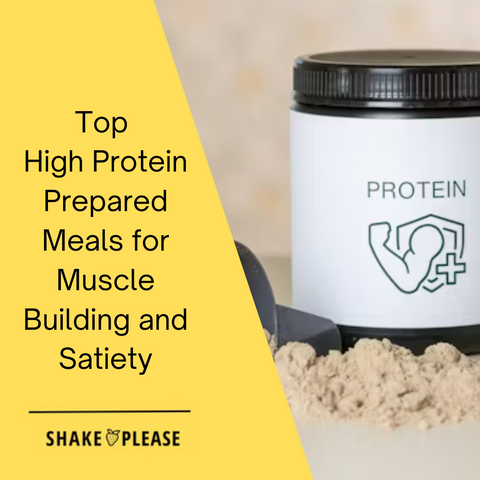
Introduction to Smoothie Replacements
Smoothies can serve as a convenient and nutritious meal replacement option, offering a quick and healthful way to consume essential nutrients. However, not all smoothies are created equal—some may lack key nutrients or contain excess calories, which can lead to unintended weight gain. Smoothies are easy to consume and provide hydration, making them especially appealing for busy lifestyles.
A well-crafted smoothie designed for meal replacement should include a balanced mix of protein, healthy fats, and complex carbohydrates to provide sustained energy and satiety. When prepared thoughtfully, meal replacement smoothies can support weight loss or help maintain weight management goals, which are some of the top tips for crafting effective smoothie . It’s crucial to care fully select ingredients and assess the nutritional content to ensure your smoothie effectively replaces a full meal.
Benefits of Plant-Based Smoothies
Here are the benefits and key components of plant-based smoothies:
-
Rich in vitamins, minerals, and antioxidants from fresh fruits and vegetables.
-
Leafy greens like spinach and kale add fiber, vitamins, and minerals.
-
Frozen fruits such as berries and bananas provide natural sweetness and creamy texture while retaining fiber to help regulate blood sugar.
-
Chia seeds and nut butters (almond or sunflower seed) offer healthy fats and protein for sustained energy.
-
Nutrient-dense ingredients like oats can be added for long-lasting fuel.
-
Liquid bases include water, milk (for added protein and calcium), almond milk, and coconut water as hydrating, dairy-free options.
-
Yogurt adds protein, creaminess, and probiotics to support gut health.
-
Plant-based smoothies support weight loss, serve as convenient snacks, and help increase whole food and healthy carbohydrate intake.
-
Some green smoothies are low in calories, making them suitable for weight management.
Choosing the Right Ingredients
Here is what you need to know when choosing the good stuff and right ingredients for a meal replacement smoothie:
-
Balance Macronutrients: Ensure your smoothie contains a good balance of protein, healthy fats, and complex carbohydrates to provide sustained energy and keep you full longer. This balance supports muscle repair, satiety, and stable blood sugar levels.
-
Protein Sources: Incorporate protein powder such as whey, pea, or hemp protein to conveniently boost the protein content. Protein is essential for muscle maintenance and repair, especially if the smoothie replaces a full meal.
-
Nutritional Enhancers: Add nutrient-dense ingredients like chia seeds, flaxseeds, or spices such as cinnamon and turmeric. These not only enhance flavor but also provide antioxidants, fiber, and anti-inflammatory benefits.
-
Healthy Fats: Include sources of healthy fats like avocado, almond butter, peanut butter, or seeds. Healthy fats promote satiety, support weight management, and aid in the absorption of fat-soluble vitamins (A, D, E, and K).
-
Fruits for Sweetness and Nutrients: Use fresh or frozen fruits such as berries, bananas, or mangoes to add natural sweetness, flavor, and essential vitamins (like vitamin C) and minerals (like potassium). Fruits also contribute dietary fiber, which supports digestion.
-
Leafy Greens: Incorporate leafy greens like spinach, kale, or Swiss chard to boost antioxidant intake and fiber content. These greens provide vitamins (A, C, K), minerals (iron, calcium), and phytonutrients that support overall health.
-
Limit Added Sugars: Avoid adding refined sugars or excessive sweeteners, as they increase calorie content without nutritional benefits and can contribute to unhealthy weight gain and blood sugar spikes.
By thoughtfully selecting and combining these ingredients, along with other ingredients you can create a nutrient-rich, balanced meal replacement smoothie that supports your health, fitness, and weight management goals.
The Best Tasting Meal Replacement Shakes for Every Diet and Lifestyle
Creating a Balanced Smoothie
Creating a balanced smoothie involves combining protein, healthy fats, and complex carbohydrates to keep you full and support weight management. Such a smoothie helps maintain satiety, preventing hunger until your next meal. Ingredients like chia seeds, nut butter, and protein powder boost the nutritional value by adding protein, fiber, and healthy fats.
Frozen fruits like bananas and berries contribute natural sweetness and a creamy texture, enhancing flavor without added sugars in fruit smoothies . Healthy fats from sources such as avocado and nuts not only support weight loss but also promote overall health. A well-balanced smoothie serves as a quick, delicious meal replacement that provides sustained energy, helps regulate appetite, and supports your overall wellness throughout the day.
Smoothie Replacement Options
Meal replacement smoothies offer a convenient and nutritious solution for busy lifestyles, providing a quick and easy way to consume essential nutrients while replacing traditional meals. Whether for breakfast, lunch, or dinner, smoothies can be tailored to meet your calorie and nutrient needs, making them versatile enough to substitute any meal of the day. They also serve as a healthy snack option, helping to manage hunger, curb cravings, and maintain fullness between other meals.
When creating a meal replacement smoothie, it’s important to consider individual calorie requirements and nutritional goals, potentially consulting a registered dietitian for personalized advice . A well-balanced smoothie typically includes a combination of protein, healthy fats, and fiber to ensure it’s both satisfying and nourishing. This balance supports weight management, sustained energy, and overall health.
Shake Please Smoothies: A Convenient Meal Replacement Choice
For those seeking a ready-made, high-quality option, Shake Please smoothies are an excellent choice. These smoothies are crafted with premium whey protein and nutrient-dense ingredients like real fruits, nuts, and seeds, delivering a balanced mix of protein, vitamins, and antioxidants. Each serving provides 25 grams of high-quality whey protein, making them ideal for muscle recovery, weight management, and overall wellness.
Popular Shake Please flavors include:
-
Strawberry Banana Protein Smoothie: A refreshing blend of ripe strawberries and sweet bananas, perfect for a nutritious start to your day.
-
Chocolate Peanut Butter Banana Protein Smoothie: Rich and indulgent, combining creamy peanut butter, banana, and chocolate flavors with muscle-supporting protein.
-
Vanilla Berry Protein Smoothie: A smooth vanilla base mixed with antioxidant-rich berries, great for post-workout recovery or a quick meal.
-
Pineapple Berry Protein Smoothie: A tropical fusion of juicy pineapple and berries, delivering vitamins, antioxidants, and protein in a delicious blend.
Shake Please smoothies are easy to prepare—simply add your favorite liquid, blend, and enjoy. They provide a convenient, tasty, and balanced meal replacement option that fits seamlessly into busy schedules while supporting your nutrition and fitness goals.
Nutrition and Weight Management
A well-crafted smoothie can be an effective part of a balanced diet for weight management, providing essential nutrients such as protein, healthy fats, and complex carbohydrates that support both weight loss and overall health. Meal replacement smoothies offer a convenient and nutritious option to help create a calorie deficit without providing very few calories while ensuring your body receives the fuel it needs.
Ingredients like protein powder, chia seeds, and healthy fats contribute to feelings of fullness and satiety, which can reduce overeating and support weight loss efforts. Smoothies can be a delicious and healthy way to manage your weight and promote overall wellness.
However, it’s important to be mindful of calorie intake. Consuming smoothies with too few calories may unintentionally slow your metabolism or trigger overeating later, potentially leading to weight gain. Therefore, ensuring your smoothie contains enough calories to replace a meal is crucial to avoid the risk of gaining weight while maintaining a sustainable and effective weight management plan.
Carefully considering the nutritional content of your smoothies will help you support your weight loss goals while maintaining overall health and energy levels.
Top Best Shakes to Replace Meals for Healthy Weight Management
Common Mistakes to Avoid
Common mistakes to avoid when making meal replacement smoothies:
-
Insufficient Protein: Not including enough protein can lead to feelings of hunger and decreased satisfaction. Since smoothies are often less filling than whole foods, it’s crucial to add adequate protein sources like protein powder, Greek yogurt, or nut butters to promote fullness and support muscle maintenance.
-
Excessive Sugar or Fruit Juice: Adding too much sugar, fruit juice, or sweetened ingredients can cause rapid spikes in blood sugar and insulin levels. This may contribute to energy crashes, increased cravings, and long-term insulin resistance. Opt for whole fruits and limit added sweeteners to maintain stable blood sugar.
-
Lack of Healthy Fats: Omitting healthy fats such as avocado, nuts, seeds, or nut butters can reduce the smoothie’s ability to keep you full and satisfied. Healthy fats slow digestion, support nutrient absorption, and play a key role in weight management.
-
Using Low-Quality or Processed Ingredients: Relying on processed powders or artificial additives instead of whole, nutrient-dense foods can diminish the health benefits of your smoothie. Choose fresh or frozen fruits, leafy greens, and natural sources of protein and fats to maximize nutrition.
-
Ignoring Nutritional Balance: Failing to balance macronutrients—protein, fats, and complex carbohydrates—can result in a smoothie that doesn’t adequately fuel your body or support your goals. A balanced smoothie helps maintain energy levels and prevents overeating later.
-
Overlooking Portion Size and Calorie Content: Consuming smoothies that are too low in calories may slow metabolism or lead to overeating later, while overly calorie-dense smoothies can hinder weight loss. Be mindful of portion sizes and total calorie intake to align with your dietary needs.
-
Not Considering Individual Dietary Needs: Everyone’s nutritional requirements differ based on activity level, health status, and goals. Tailor your smoothie ingredients accordingly, and consult a healthcare professional if needed.
By avoiding these common mistakes, you can create meal replacement smoothies that are both satisfying and supportive of your health and weight management goals.
Conclusion on Smoothie Diets
Incorporating smoothies into your daily routine can be a delicious and effective way to support your health goals, whether aiming to lose weight, boost your energy levels, or enjoy a quick meal packed with nutrients. However, it’s important to remember that not all smoothies are created equal. A satisfying meal replacement smoothie should offer a balance of good carbohydrates, healthy fats, and proteins to keep you full and energized until your next meal.
To get the most health benefits from your smoothie, focus on nutrient-dense ingredients, which may include milk as a base. Adding chia seeds, nut butter, or even sunflower seed butter can provide healthy fats and added fiber. At the same time, frozen fruit and leafy greens like spinach or kale deliver essential vitamins, minerals, and antioxidants. For a protein boost, consider including protein powder, Greek yogurt, or oats—these help maintain your energy levels and prevent you from feeling hungry soon after drinking your smoothie. When blending your meal replacement smoothies into liquid form , be mindful of the calories and sugar content.





